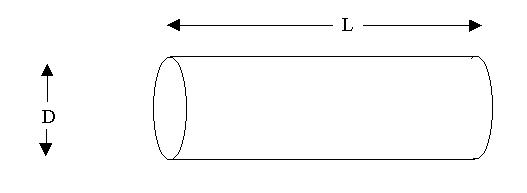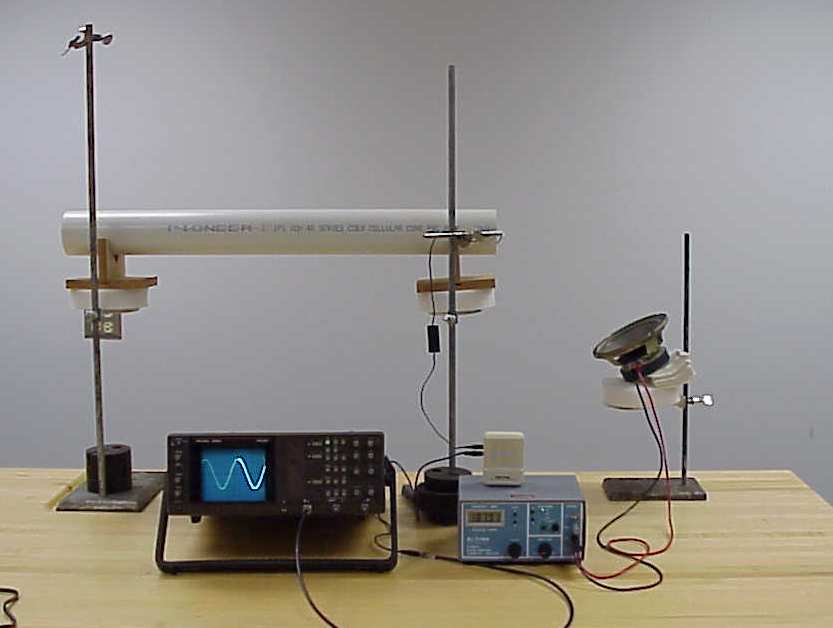
I made up a set of pvc pipes of different diameters. They had almost
the same length L, so they all had nearly the same resonant frequency,
about 190 Hz.

Each pipe has a quality factor Q. This quality factor Q will be high if the losses in the pipe are a small fraction of its stored energy. For a high Q, the pipe resonates loudly only near its resonant frequency. That is, it responds to outside sounds strongly, but only close to its resonant frequency. For a low Q, the pipe response is smaller, and is spread out further from the resonant frequency.

Here is the setup for measuring a pipe Q. A speaker generates the sound,
and a small microphone in the pipe picks up the response.
There are two main ways to lose energy in a pipe: 1) radiate sound out the open ends, and 2) lose energy right next to the wall (about 1/3 mm from the wall!) due to viscosity.
For very narrow pipes, like 3/4" diameter, the viscous wall losses dominate, and Q is low. As we go to larger diameters, wall losses diminish as a fraction of the stored energy in the pipe. When we get to large diameters, like 3", 4", etc., however, the losses due to radiation from the pipe ends begins to dominate.
When we plot Q vs pipe diameter, we see a small Q at small D, rising to a maximum at 2"-3" diameter, then dropping off at larger diameters. This shows the competition between the two loss mechanisms, viscosity near the wall, and radiation of sound from the ends.

Plot of Q vs. pipe diameter in mm.
This work was published in a paper with Dan Hatten in the American Journal of Physics in 2001. (Acoustic quality factor and energy losses in cylindrical pipes Michael J. Moloney and Daniel L. Hatten, Am. J. Phys. 69, 311 (2001)